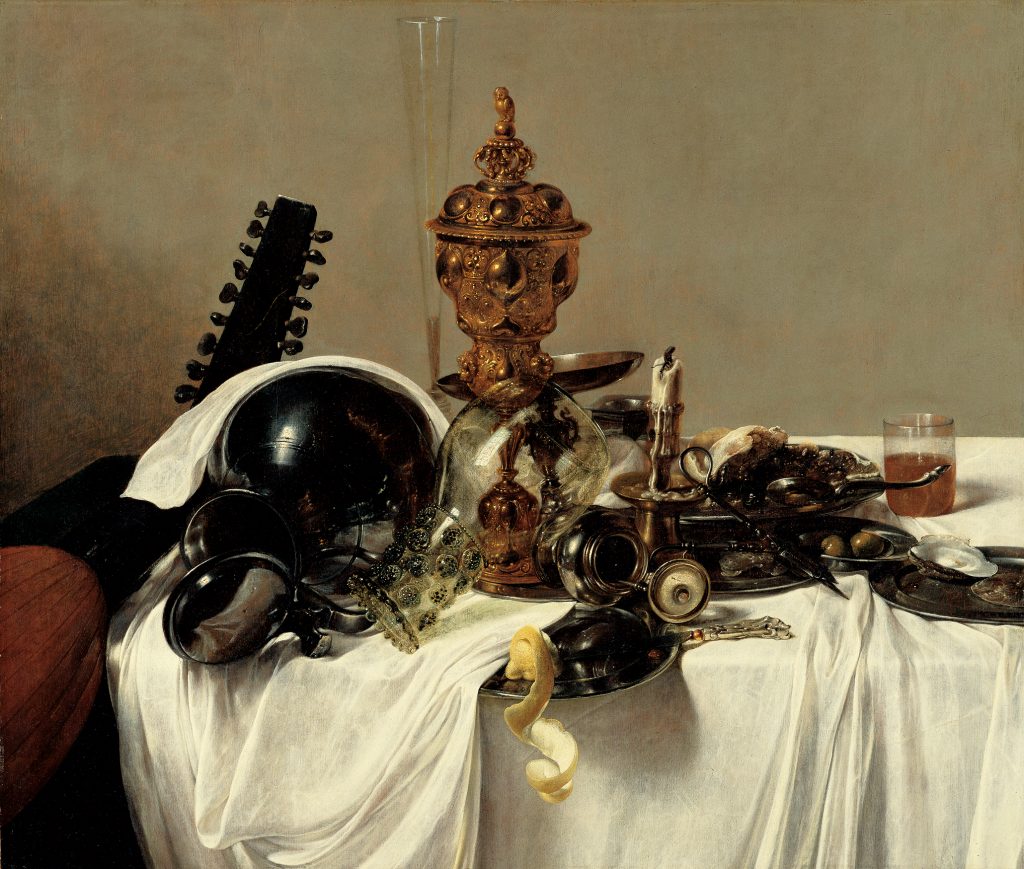Banquet Piece (work of art)
Información sobre la obra de arte
Ideas clave sobre esta obra de arte
- This is a still life painting. Still life paintings depict natural (usually nonliving) or human-made objects. They often include flower bouquets, banquet tables, or market stalls.
- A banquet piece is a style of still life painting that was popular in the Netherlands during the 17th century.
- The objects displayed on the table in this painting have been rendered in fine detail and look realistic. These luxury items depict the wealth of the person who commissioned the painting and the success of the Dutch economy.
- The owl on top of the gold goblet represents the artist, whose last name means owl in Dutch. All of his still life paintings include some type of owl design.
Más información
This style of still life painting gained popularity in the Netherlands in the 17th century. A banquet still life generally depicts a dining table covered with luxury items. These items include fine linens, decadent food and beverages, and expensive serving pieces. In this painting the detailed surfaces and textures of the tablecloth, food, and tableware look real. The tableware is made from a variety of materials, including pewter, gold, silver, and glass.
Still life paintings often contain visual clues about what was happening in religion, politics, or society. During the 17th century, Dutch colonization and trade brought wealth and a variety of imported goods to port cities like Amsterdam. Dutch citizens commissioned (hired) artists to paint banquet still lifes to show off their new wealth. Works like this one highlight the patron’s wealth and depict exotic goods that were being imported to the Netherlands from around the world. The overindulgent display on the table represents the country’s financial success during the Dutch Golden Age.
Jan Jansz. den Uyl was a successful Dutch Golden Age painter. He is best known for his still life banquet pieces and his ability to paint realistic-looking detail and texture. The artist’s last name (Uyl) means owl in Dutch. He always included his signature owl motif in his still life paintings. In Banquet Piece he painted an owl design on top of the gold goblet.
Recursos adicionales
Recursos para los profesores:
- Read an article about the history of still life painting in Northern Europe.
- Read an article that explores the term “Dutch Golden Age.”
- Watch a video that explains the time period during which this painting was made.
Recursos para los estudiantes:
- Watch a video that explores the painting up close.
- View a still life painting in the NCMA collection that was created during the same time period.
- View examples of finely detailed Dutch paintings.

